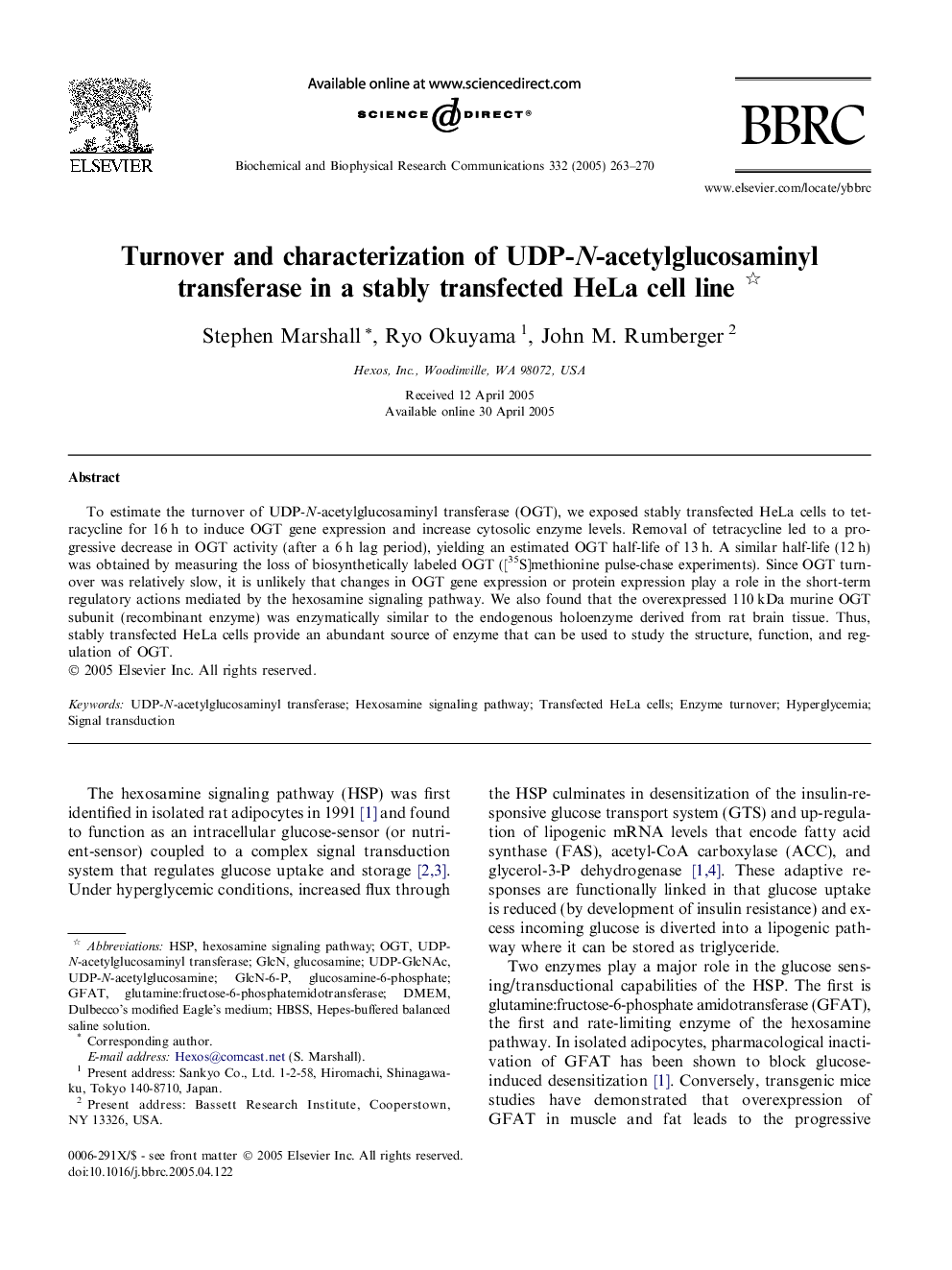| Article ID | Journal | Published Year | Pages | File Type |
|---|---|---|---|---|
| 10769923 | Biochemical and Biophysical Research Communications | 2005 | 8 Pages |
Abstract
To estimate the turnover of UDP-N-acetylglucosaminyl transferase (OGT), we exposed stably transfected HeLa cells to tetracycline for 16Â h to induce OGT gene expression and increase cytosolic enzyme levels. Removal of tetracycline led to a progressive decrease in OGT activity (after a 6Â h lag period), yielding an estimated OGT half-life of 13Â h. A similar half-life (12Â h) was obtained by measuring the loss of biosynthetically labeled OGT ([35S]methionine pulse-chase experiments). Since OGT turnover was relatively slow, it is unlikely that changes in OGT gene expression or protein expression play a role in the short-term regulatory actions mediated by the hexosamine signaling pathway. We also found that the overexpressed 110Â kDa murine OGT subunit (recombinant enzyme) was enzymatically similar to the endogenous holoenzyme derived from rat brain tissue. Thus, stably transfected HeLa cells provide an abundant source of enzyme that can be used to study the structure, function, and regulation of OGT.
Related Topics
Life Sciences
Biochemistry, Genetics and Molecular Biology
Biochemistry
Authors
Stephen Marshall, Ryo Okuyama, John M. Rumberger,
